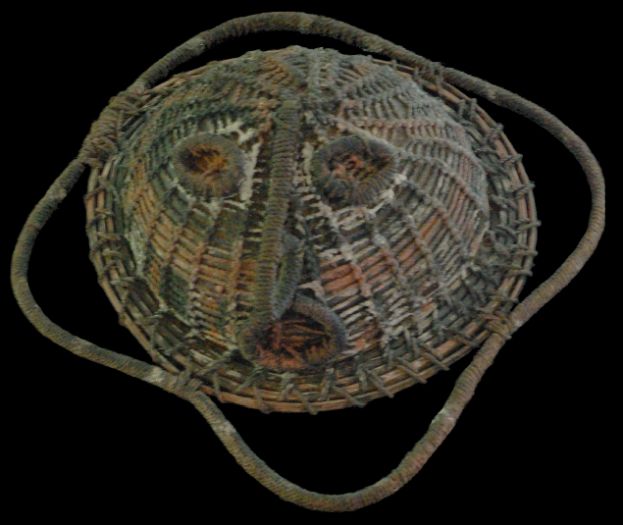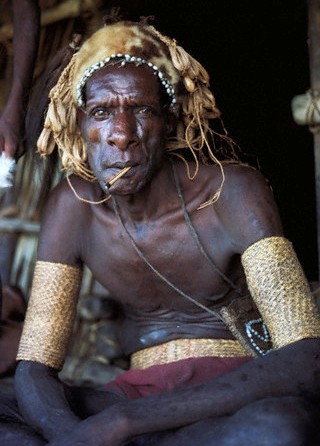Papua (Irian Jaya) The Asmat
Ethnic headdresses / PUBLIÉ LE 01/04/2012 /
0 COMMENTAIRE(S)
Asmat population was observed by explorers from the deck of a ship in 1623. A Dutch merchant, Jan. Carstenz, recorded signs of this discovery. Later, Captain James Cook and his crew were the first explorers to set foot in Asmat territory September 3, 1770. The newspaper of Captain Cook, the Asmat warriors have created such fear that the explorers are then removed. During the first 2 decades of the twentieth century, all objects made by Asmat were repatriated to Europe, where they aroused great excitement.

Papua Asmat Headdress
Period: XXth Century
Material: Rattan, fiber and natural pigments
Function: Ritual
To enjoy the Asmat Primitive Art, one of the prerequisites is the understanding of environmental and where the artist comes from. Although the Asmat region can be regarded as a sunny, pleasant, the field reality is otherwise. The environment is very hostile. The marshes are filled with sediment just above the sea level, almost constantly inundated by daily tides and torrential rains. Mud is a constant scourge of life. The jungles, choked by huge trees, bushes and brambles, are extremely difficult to penetrate. The passage from one place to another in the jungle is mainly using canoes, through many winding rivers.

Papua Assmat headdress made of a multitude of pompoms
Period: XXth Century
Material: Natural fibers woven in natural colors
(reddish brown) the whole is mounted on a network of cord
(red ocher pigment)
Function: Clothing

Few large animals live in the wilderness. Only domesticated dogs and wild boars have been identified. In contrast, many smaller species such as marsupials, rats and bats, are present. Reptiles such as crocodiles, lizards and snakes, found in marshes and wetlands provide pleasant. Rivers, meanwhile, provide fish, shellfish and certain breeds of turtles. On a wide variety of birds, like the hornbill, the cockatoos, the crown pigeon and the bird of paradise among the best known, gratifies the jungle songs as well as raucous music. The species and number of insects seem unlimited.
No stone or metal are from this land in the southwest of New Guinea. Pottery has not been developed as well, gardening and agriculture are impassable. However, if the jungle was cleared, the soil is fertile especially where one can note the presence of peat, but only for two types of plantations. Still, heavy rains (5080 mm per year) and daily tides would oppose such an eventuality. The salt water rivers and coconut milk are the most common drinks. The food comes mainly from the jungle and what can be found in water. The base of the Asmat diet is sago, a starch-based coarse produced palm oil. Fish, wild boar, birds, fruits and, occasionally crocodiles, are also part of the food. Capricorn beetle larvae, often called sago larvae and rats are also eaten.

headdress Papua Assmat
Period: XXth Century
Material: natural vegetable fiber color (reddish brown),
shells (Basketry)
Function: Clothing
0 COMMENTAIRE(S)
Article published on 01/04/2012 at 12h12
in the category « Ethnic headdresses ».














